Patric Hornqvist played 407 regular-season games with the Pittsburgh Penguins, scoring 264 points along the way. Thanks to his efforts beyond point scoring, he became a fan favorite in the city.
Related: Penguins’ Best & Worst Trades of the Decade
Over his six seasons in Pittsburgh, Hornqvist was a player with on-ice tenacity and one of the group’s best personalities off the ice. He was known for motivating his teammates and being one of the best characters in the locker room.
Hornqvist’s Success with the Penguins
After joining the Pens, Hornqvist was one of the most consistent goal scorers on the squad, producing an average of 22 goals each season. Most of his goals were nothing flashy or highlight-reel material as he became known as a gritty net-front presence who crashed and screened the goalie every chance he got.
It was his tenacity in front of the net that led to Hornqvist re-writing Penguins’ history books on Dec. 4, 2018, when he scored the fastest hat trick in team history. The first of his three goals in 2:47 was a rebound opportunity he capitalized on by standing square in front of then-Colorado Avalanche goalie Semyon Varlamov.
Aside from being an important point producer on the team, Hornqvist also became a top playoff skater. In six postseasons, he played in 66 games and accumulated 38 points, a few of which came in crucial situations. Fans won’t soon forget his overtime goal in Game 4 of the Eastern Conference Semifinal against the Washington Capitals in 2016, or his heroic Cup-clinching goal in Game 6 of the 2017 Final, against his former team, no less.
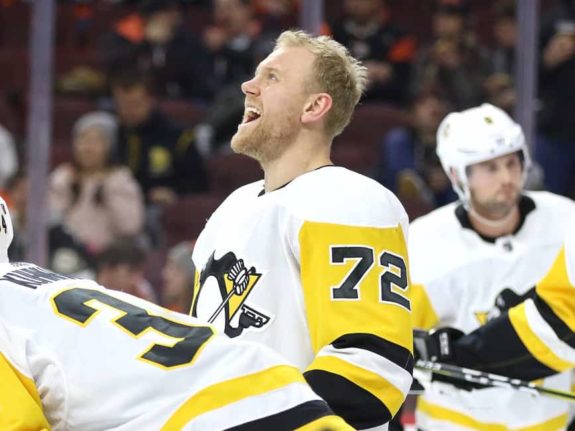
Even though Hornqvist is no longer a Penguin, let’s look back at how acquiring Hornqvist led to loads of success for the Penguins.
Hornqvist Brought to Pittsburgh
After the 2013-14 season, forward James Neal had run his course in Pittsburgh. Neal had become great friends with linemate Evgeni Malkin, posted a 40-goal season in 2011-12, and made his only All-Star Game that same year. After that season, a new contract that Neal signed worth $5 million in cap hit lasting six years was about to start.
The contract had a modified no-trade clause that was set to kick in for the 2015-16 season. Aiming for extra cap space and a roster overhaul, Neal was moved before the clause could start making him harder to move.
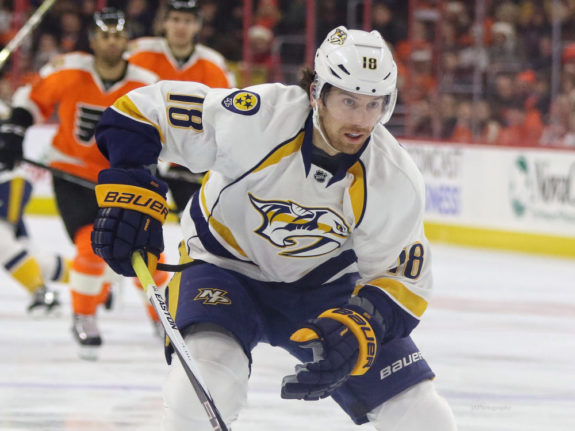
In his first trade only 20 days after being hired as the Penguins’ new general manager, Jim Rutherford sent Neal to the Predators for Hornqvist and Nick Spalling. While we know what Hornqvist has done for the team, it’s Spalling we are going to focus on for a moment.
The Hornqvist Trade Still Paying Off
Spalling played in all 82 games of the 2014-15 regular season, and all five playoff games. After recording 9 goals and 18 assists for 27 points, he was packaged with Scott Harrington, Kasperi Kapanen, and some draft picks for Phil Kessel. While other pieces came with Kessel, he was the only one who saw NHL time with the Penguins.
You may also like:
- Jake Guentzel Confirms He Wanted to Stay With the Penguins
- NHL Rumors: Penguins, Senators, Oilers, Panthers
- Will Sidney Crosby Be a Career Pittsburgh Penguin?
- Where Will College Free Agent Collin Graf Sign?
- 4 Penguins’ First Round Targets in 2024 NHL Entry Draft
The time Kessel spent in Pittsburgh was mostly successful. He was a huge part of the 2016 and 2017 Cup runs, as well as being in the top three of the team scoring every season. Before joining the Penguins, Kessel was more known for his scoring ability and being an iron man by never missing a game. While his iron man streak stayed intact in Pittsburgh, he became one of the Penguins’ best playmakers. Twice he would set personal records in assist numbers, picking up 47 assists in 2016-17, then 58 the following season.
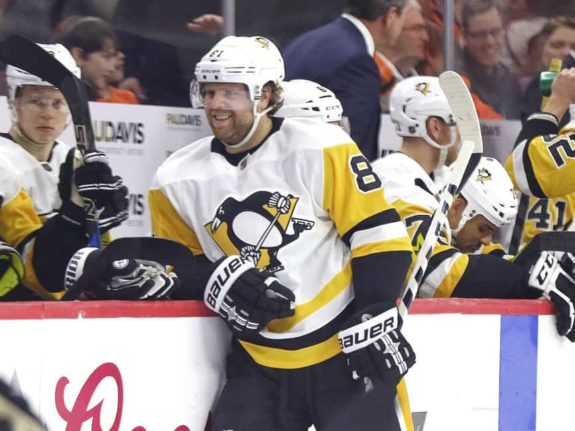
As things began to soar between the Penguins and Kessel, it was his time to move on. The Penguins sent Kessel to the Arizona Coyotes for Alex Galchenyuk and defensive prospect Pierre-Olivier Joseph.
Before we go into detail on Galchenyuk, it should be noted that Joseph is one of the top young defensemen currently on the Penguins.
There was a lot of excitement for Galchenyuk to join the Penguins and have a bit of success alongside Malkin. It was quickly realized that Galchenyuk was not going to live up to his expectations. Dropping to the fourth line and on occasion being a healthy scratch for the team, the Penguins needed to move him and move him fast.
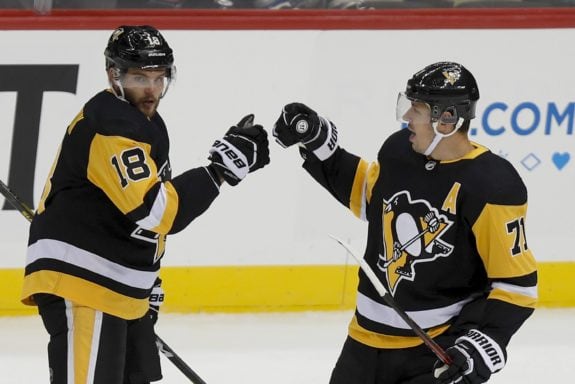
Rutherford found a taker on Galchenyuk in the Minnesota Wild; he was packaged with prospect Calen Addison and a first-round pick in return for Jason Zucker. And that is where we find ourselves today. Rutherford effectively turned Spalling into Zucker and found great success along the way.
Zucker was an exciting player for the Penguins. His scoring ability meshed well with whoever he played with between Malkin or Sidney Crosby. Zucker played in 172 games with the Penguins and racked up 95 points between 50 goals and 45 assists. Zucker’s contract ended after the 2022-23 season and he could pan out to be one of the best acquisitions Rutherford made as the Penguins’ general manager.
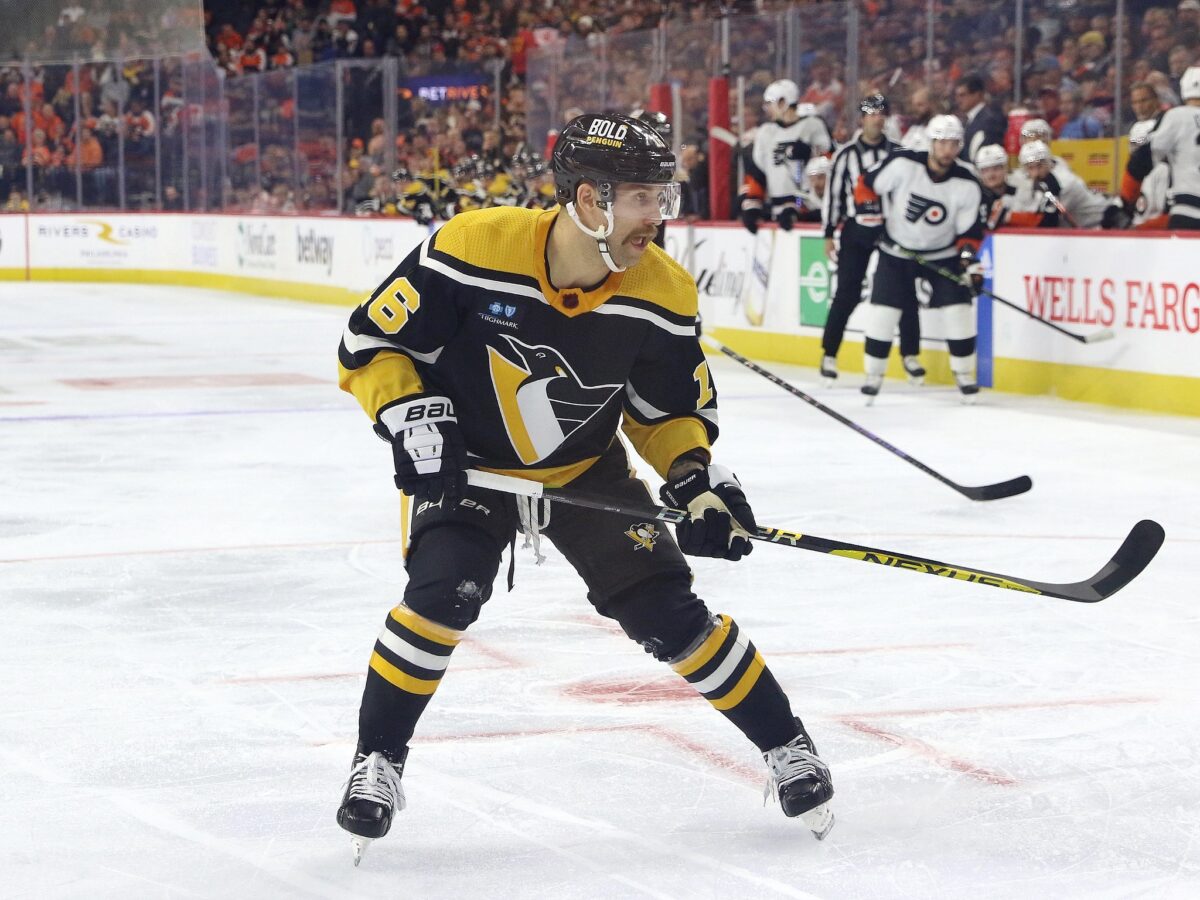
To be clear, Hornqvist is not the root of this trade tree. He is just a hefty branch that stems from the Penguins acquiring Johan Hedberg in 2001 for Jeff Norton. The way the move of acquiring Hornqvist has shaken out, it looks to be one of the most important moves made in team history.
Related: Pittsburgh Penguins You Forgot About
Without sending Neal to the Predators, the Penguins wouldn’t have received Hornqvist and subsequently might not have gotten Kessel or Zucker. Without Kessel or Hornqvist it’s pretty doubtful that the Penguins become Stanley Cup champions in 2016 and 2017.
Hornqvist Updates
Not even two weeks after this initial story was published, the trade tree involving Hornqvist sprouted a new branch. On Sept. 24, 2020, Hornqvist was sent to the Florida Panthers for Mike Matheson and Colton Sceviour.
A trade that was met with backlash from fans, the Hornqvist deal originally looked like it could pay off for the Penguins. The team gained a younger, speedy defenseman in Matheson who has the ability to produce offence despite some defensive shortcomings. Meanwhile, the forward depth was going to be tested for every team during the 2020-21 NHL season, and Sceviour was one of the names the Penguins hoped would fill that role.
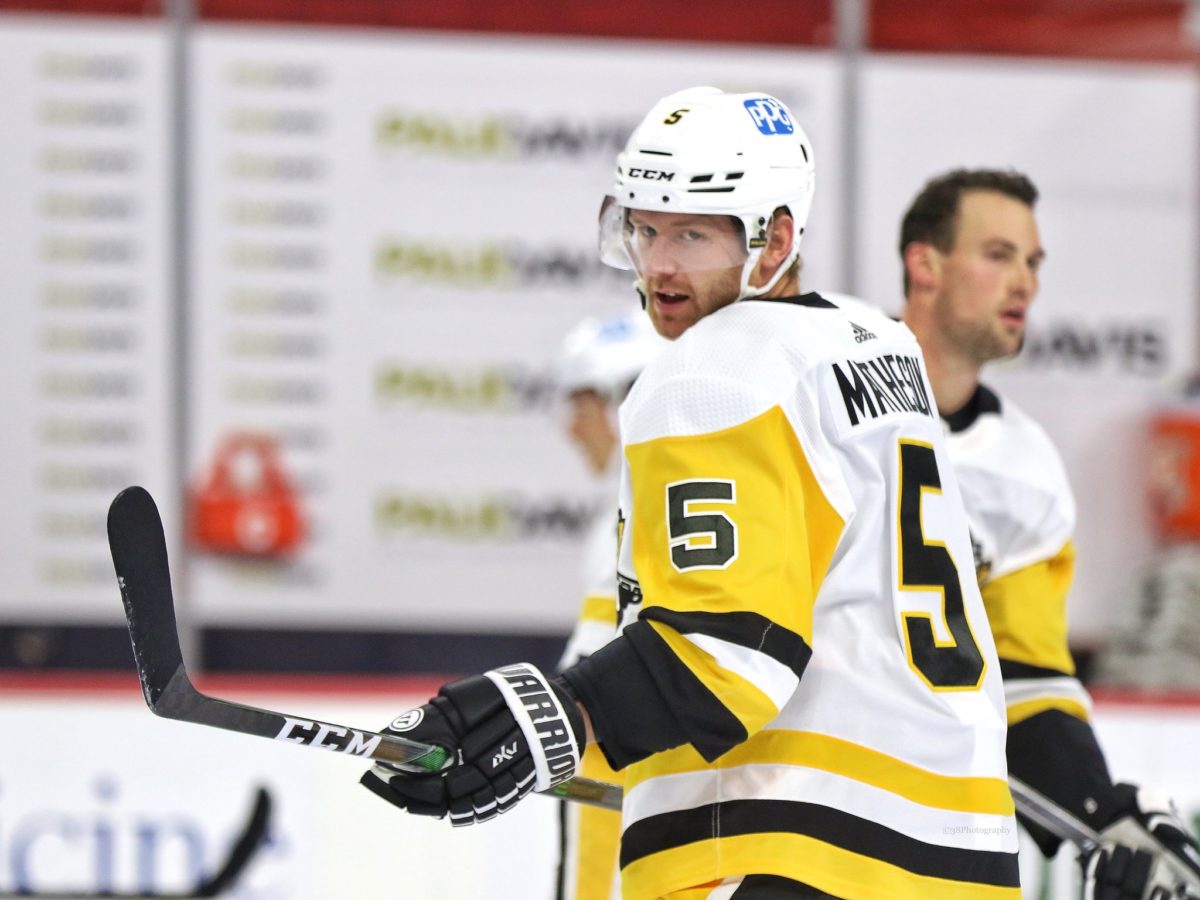
The main reason behind sending out Hornqvist lies in the team’s focus on getting younger and faster. If that’s all they set out to accomplish then perfect. Matheson is seven years younger and definitely carries faster foot speed. Hornqvist also carried the burden of being an injury-prone player. With multiple concussions on his doctor’s list, it’s not ideal to keep an aging player around who had a knack for pain.
Since the trade, each player had their own level of success. Is it time to pick a winner or loser of the trade?
Matheson with the Penguins
Starting with the Penguins additions, Matheson and Sceviour were one of the last deals made by Rutherford before he jumped ship. Sure, it’s a little poetic that Rutherford’s tenure in Pittsburgh was virtually bookended with a Hornqvist deal, but this one was not well received.
Matheson made $4.875 million against the salary cap and the contract lasted until 2025-26. For a little context, Crosby’s contract expires the year prior. It was Matheson’s bloated contract and the fact it sent away a fan favorite in Hornqvist that forced the critics’ hands.
The Matheson experiment didn’t last long as he was traded to the Montreal Canadiens in July 2022. In 118 games, he accumulated 47 points.
Sceviour’s 1 Year in Pittsburgh
Sceviour, on the other hand, played the last year of his contract with the Penguins and skipped town during free agency. With the Penguins, he played in 46 games collecting five goals and five assists for 10 points. He averaged 9:35 of ice time and not much else to speak of. He spent the whole season coasting around the taxi squad and fourth line. The Penguins didn’t re-sign him and sent him to free agency where he picked up a one-year, two-way contract with the Edmonton Oilers.
In 35 games with the Oilers, Sceviour had two goals and three assists for five points. He signed with SC Bern in Switzerland following the 2021-22 season.
Hornqvist in Florida
Now to the main event: What has Hornqvist been up to since leaving the Penguins? He’s been a prominent veteran face with the Panthers. In 2020-21, he scored 14 goals and 18 assists for 32 points. Not bad for a 34-year-old who scored the same amount of points in his final season with the Penguins in fewer games. For the 2021-22 season in Florida, he played in 65 games with 11 goals and 17 assists for 28 points. Following his retirement after the 2022-23 season, Hornqivst concluded his Panthers tenure with 131 games, 26 goals, and 63 points.
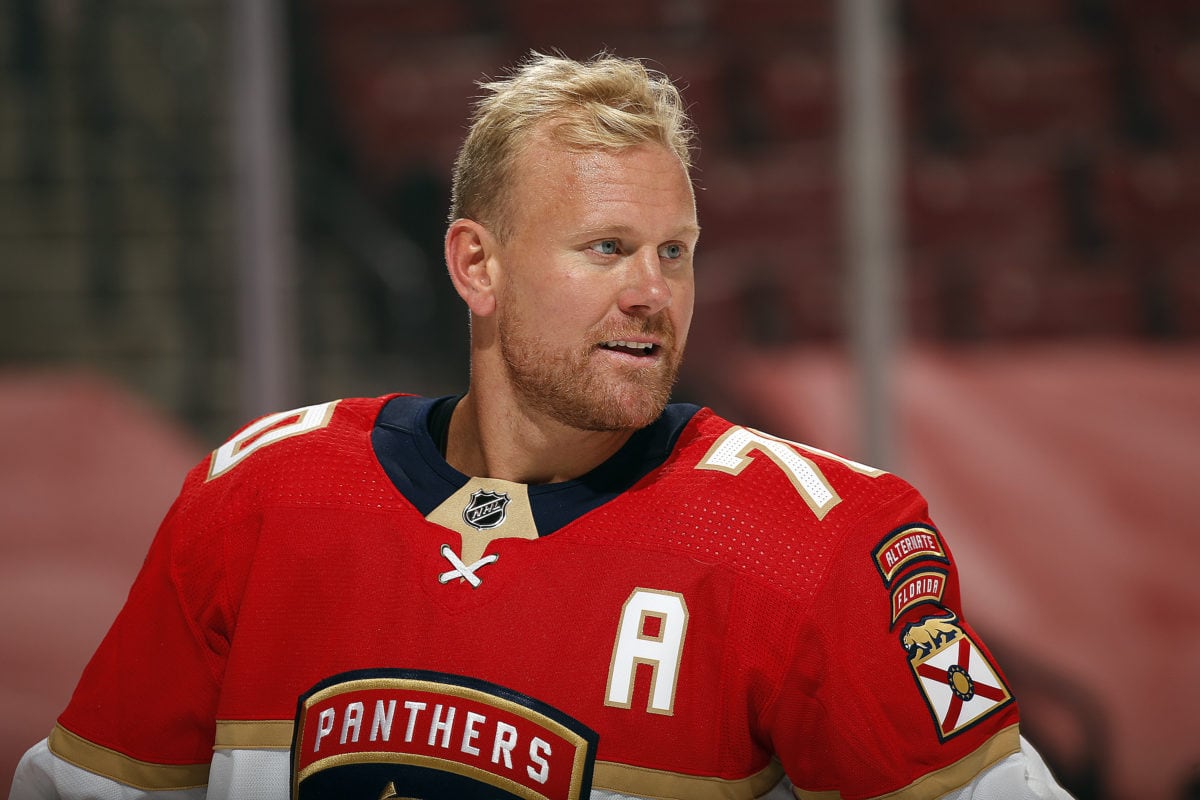
Picking a winner or loser of a trade is always difficult because both teams believe they received a net positive. For what it’s worth, both the Penguins and Panthers have excelled with what they received. The Penguins gained a quick, offensive, albeit expensive defender who fits the defensive scheme pretty well. The Panthers pulled in a veteran who helped lead his team full of young stars and gain notoriety as a team to be feared in a non-traditional hockey market.
A lot has changed with the Penguins on the ice and in the front office since Hornqvist arrived in 2014. Shockingly, even more has changed since his departure in 2020. It’s safe to say both teams have found ways to utilize their new weapons and win games in an era of the league that has seen more speed bumps than ever before.
Sign up for our NHL History Substack newsletter

